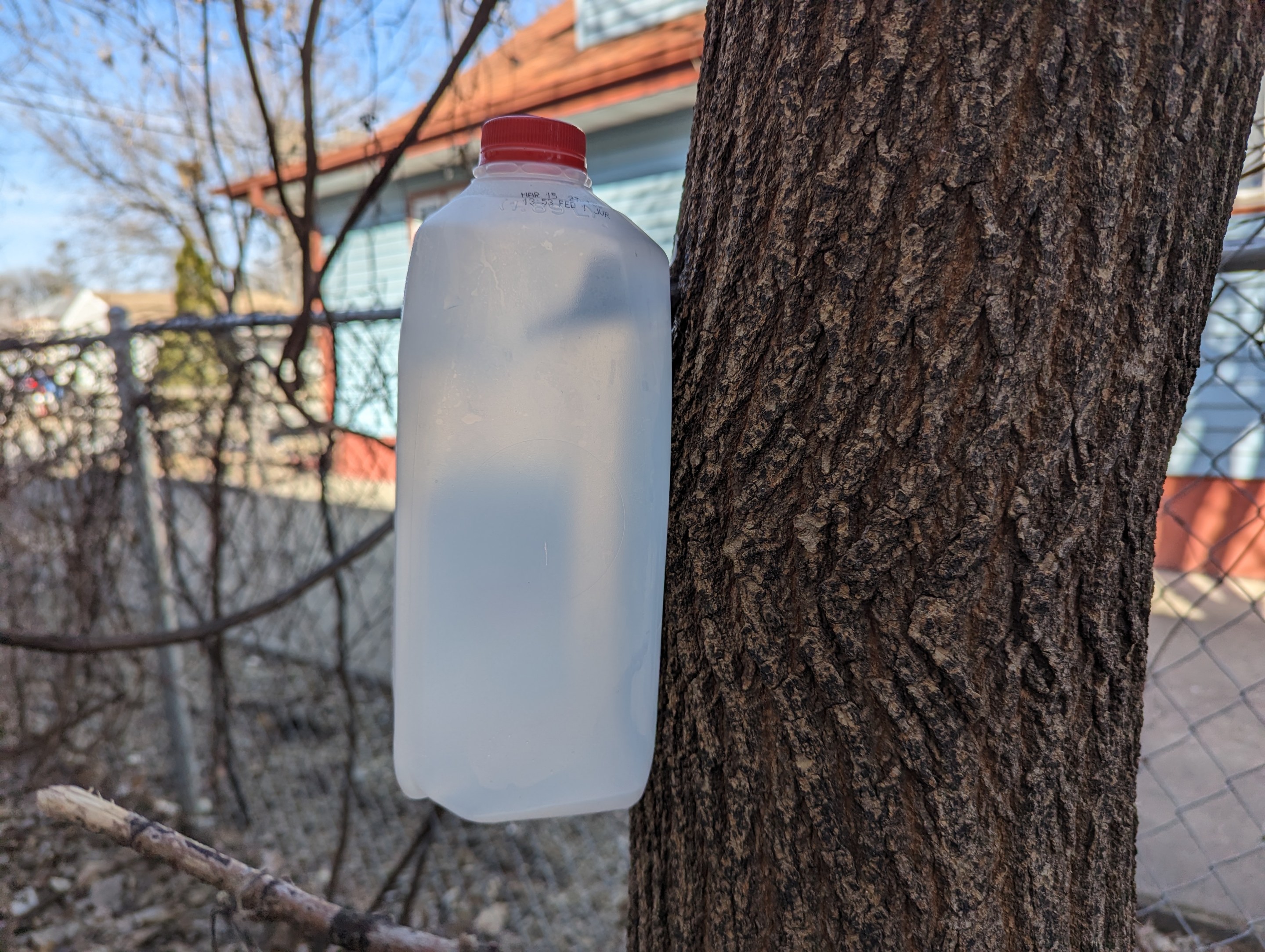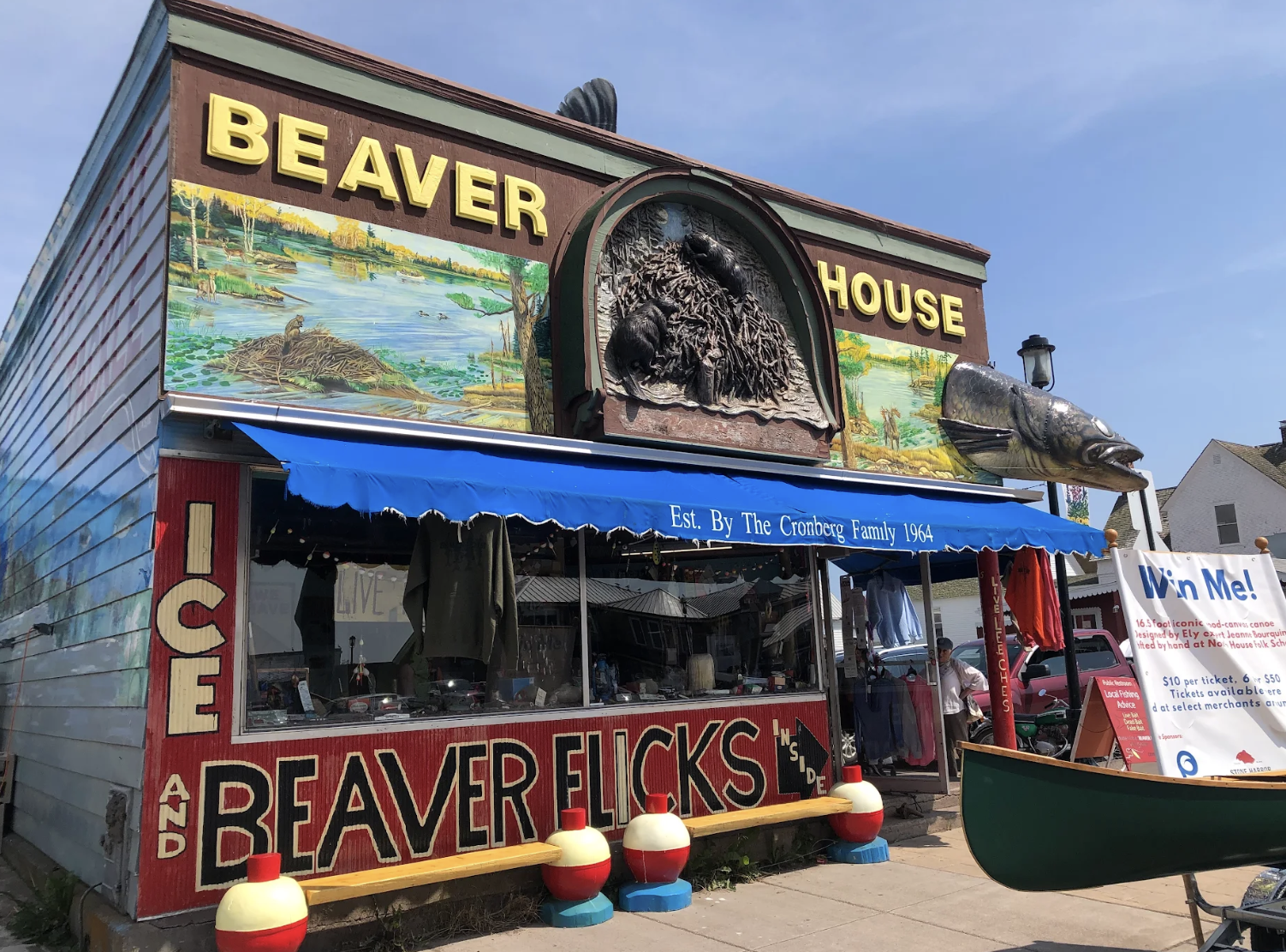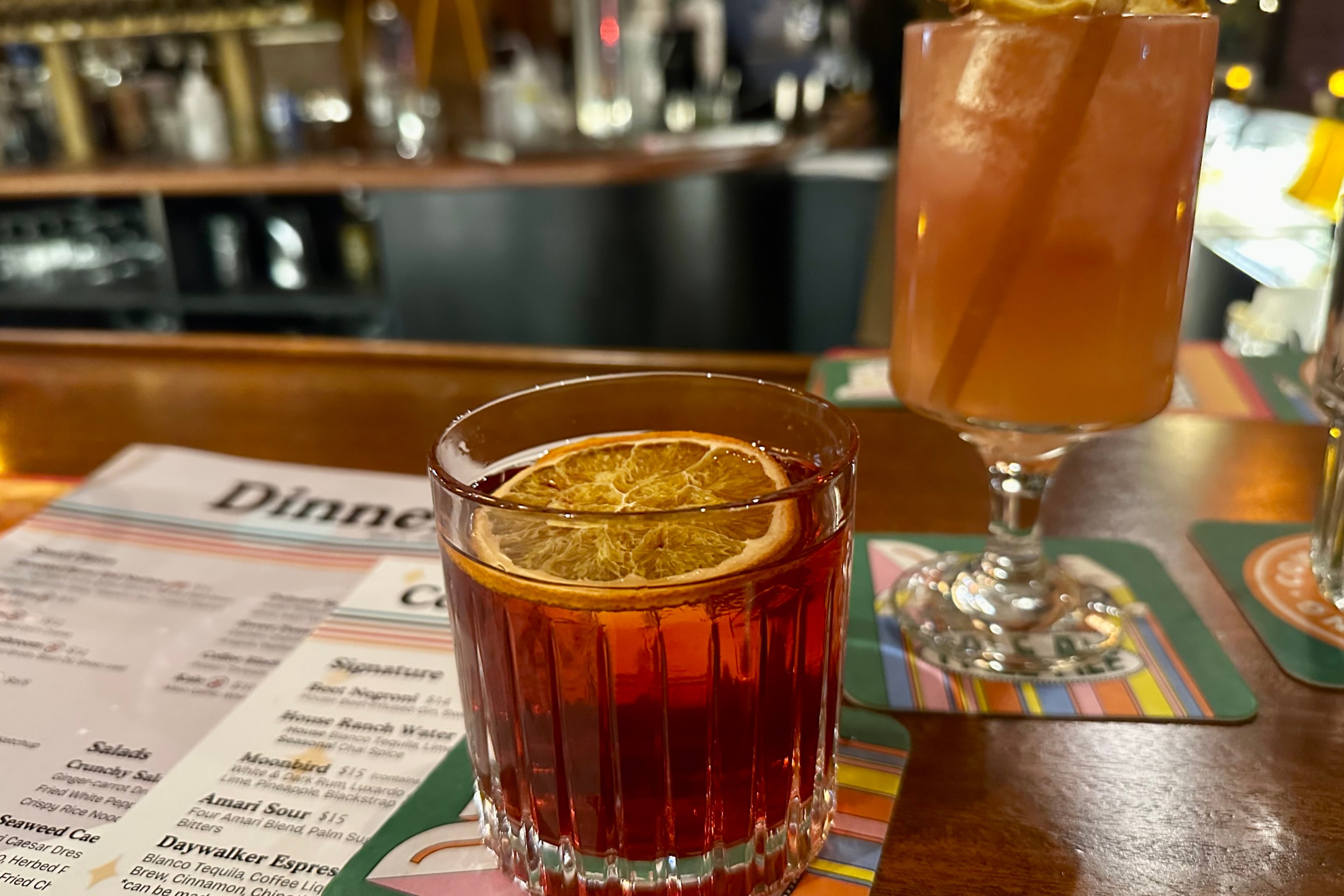I shouldn’t need to sell the virtues of real maple syrup, but here goes: It’s good.
Pearl Milling (née Aunt Jemima) table syrup is cheaper for a reason. It just doesn’t have what maple syrup has: the depth of flavor, the aroma, the perfect viscosity. And last year, I was close to having my own batch of homemade maple syrup, essentially for free, from trees I tapped at our apartment building in northeast Minneapolis… and I blew it. You don’t have to blow it.
“Everybody loves maple syrup, and I think a lot of people think it’s really hard to make,” says Kao Thao, a park naturalist at Fort Snelling State Park. “That’s one of the reasons why we teach maple syrup.”
Fort Snelling and other parks around the state run programs every March to demonstrate maple syrup production and show how folks can do it themselves. If I’d known of Thao and these programs before my own attempt, I’m sure my batch would have been perfect instead of a botch.
“The intent is to teach people how to produce their own maple syrup in their own backyard,” Thao says. “And it’s pretty easy, and it’s very cost effective.”
Easy, sure. Easy for you, certainly. It should have been easy for me as well, though I’d never attempted it before. But it is not 100% idiot-proof, or at least it wasn’t for this humbled writer, not even with some guidance from my partner, who worked at a sugar shack in Massachusetts for a few seasons. Let me explain, with important items and/or points in bold.
Identifying Your Trees
Maple syrup is what you get when you concentrate sap from maple trees, mostly by boiling the water out of it. The process is possible with a few other species of trees (notably birch and black walnut), but maple trees are prized for their unique flavor and (relatively) high sugar concentration. Even with the most sugary maple species, the sugar maple, it takes 40 gallons of sap to boil down into 1 gallon of syrup. Other maple species require even more sap volume to get that 1 gallon.
So you will need a maple tree or two. Maybe more. It helps to have more than one option in case one of your trees doesn’t run sap very well.
Note that Racket’s (newly) official position is: Don’t tap any tree that’s not yours or you have permission to tap. “If it's on a boulevard, that is on city property, then yes, you need a permission from the city,” Thao says. “They rarely say ‘yes.’”
Maples have the most famously identifiable leaves of all trees, even for us Yanks. Sugar maples are ideal if you have them, but look for other maple species as well: red maple, black maple, silver maple, and even box elder (it’s a maple species!) can all produce good syrup. There are guides to help you with identification, though this might be a task to take on in the warmer months—without leaves, it can be hard to spot the difference between maple and ash.
Make sure each tree is at least 10 inches in diameter. If you’re not sure, you can always wrap a tape measure around the trunk. I’ll save you the middle school math recall: diameter = circumference ÷ π. (Just go with 3.14.)
For the trees to run sap, it’s got to be early to mid spring, specifically with fluctuation between freezing and thawing. The biomechanics for what’s happening are complicated, but the important thing for our purposes is that when it’s consistently too cold or too warm, the sap doesn’t flow around inside the tree. It’s the freeze/thaw oscillation that gets things going.
What You’ll Need
Now comes the equipment. Unless you’re trying to recreate the techniques of our Indigenous forebears, who invented this whole enterprise, just use a drill and get some metal spiles. Make sure the hole is exactly 2 inches deep into the trunk. The trunk wood where the sap moves around is only about 2 inches deep, no matter the size of the tree. I marveled at my partner’s technique of measuring 2 inches from the tip of the drill bit and wrapping masking tape around it there to mark depth. Clever. Also, drill the hole at a slight upward angle so you can get sap falling outward, rather than accumulating in the back of the hole.
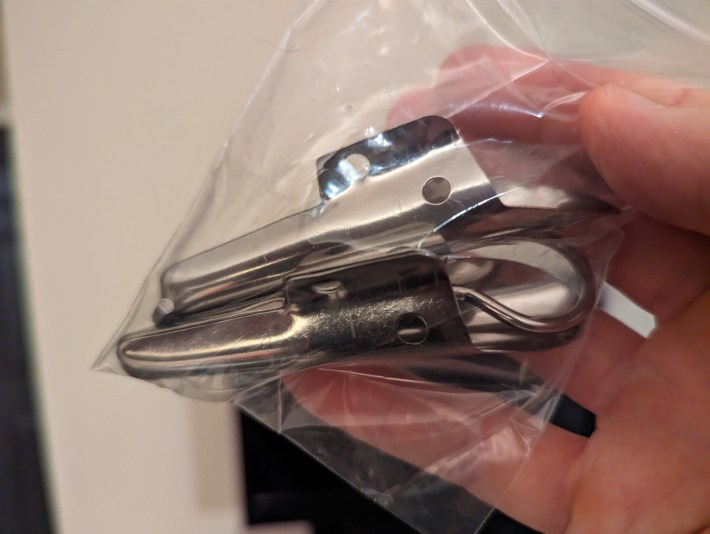
We must have had a good tree at just the right time, because she pulled the drill bit out with a little splash of sap. A productive tree will give you a steady and maybe even rapid drip. Make sure to clear your hole of drilled wood shavings as much as you can (maybe poke something in there to scrape them out), and then pound in your spile. You might want to use a rubber mallet so you don’t bend the spout end by wailing on it.
The tree might already be doing its thing and dripping sap out the spile, so now you need to attach something to collect it. Spiles often come with hooks and holes to hang the hooks from, so if you want to feel like a flannelled and bomber-hatted woodsman, you can hang from the spile the rustic metal pail that your grandpappy’s grandpappy used to carry his lunch, and then sniff the air and declare “storm’s a-brewin,’” or something by Thoreau. Or you can just cut a small hole in the side of a plastic milk carton near the top, and jam that sucker on there.
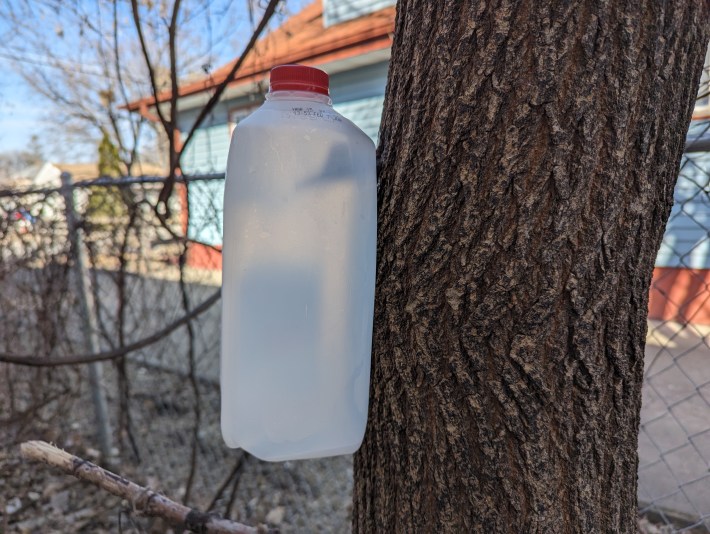
Can you do more than one tap in a tree? Thao says the rule is 10-inch to 18-inch diameter trees can only take one tap, but 18-inch to 25-inch can take two, and if you have an absolute unit 25-inch plus diameter tree you can go for three. But three is the limit—no matter how huge the tree.
You might be thinking this enterprise amounts to harmful vampirism unto trees, since you’re wounding the tree and extracting its delicious blood. To that, I say: That’s exactly what it is. Vampires are sexy. You’re sexy. Go prey upon the pure, innocent trees, you dark lords and ladies. They’ll swoon in your embrace.
But also, according to Thao: “On average, a really good-sized tree in a month could intake up to a thousand gallons of liquid. When you get about 5 gallons of sap per week from a tree, that’s nothing. That’s just like poking yourself in the finger with a pin or needle and a drop of blood comes out.”
The sap is a low-viscosity juice that’s almost as clear as water, and even though it only comes out a drip at a time, you’ll have volume before you know it. If you went with the milk carton method, you might have to tie the carton to the tree to keep it from shaking loose if—and I didn’t see this coming—squirrels get interested in it. The collected sap is essentially sugar water, the beverage possibilities of which was not lost on Indigenous peoples, though Racket’s (also freshly minted) official position is chugging it raw might be microbially dicey without pasteurization. Undaunted, your local mischievous critters are likely to notice accessible jugs of mape-orade stuck on their climbing trees and might want a taste. Ants might get in there too. If that has you squeamish, suck it up: You’re going to be filtering it later and any germs are going to get annihilated by prolonged and zealous boiling.
Cold-Storing Your Sap
Now you’ve got a full pail or carton, so your sap has got to go into some kind of food-safe storage tank, getting refrigerated. We used a 5 gallon water cooler jug and then added a second one. Sap will flow at different rates, depending on temperature, so check it a few times per day.
Now, a 5 gallon jug is a big item to store in your fridge. If you have a chest freezer with space, great. If not, given the climate of Minnesota spring, your best option is probably storing your tanks outside. “You want to store it in the coldest place possible,” Thao says. “Snow. Pile snow on top of it. Once the temperature gets up to about 50 degrees, it usually only takes about two days for that to start to turn white-ish.”
Now we get to the part of the story where I blew it last year.
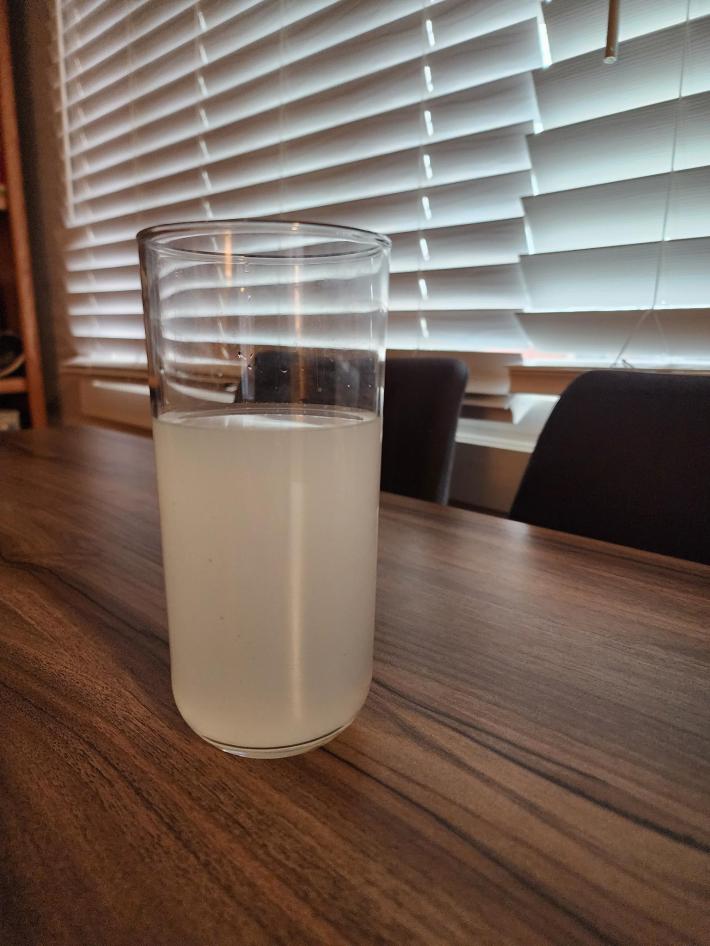
I don’t know why it didn’t occur to me that sap was perishable. I didn’t think about it at all. I subconsciously assumed sap was going to work like in Jurassic Park, where it flows down a tree and millions of years later it’s still clear and transparent enough to showcase a fossilized bug. I didn’t think about it as a perishable food item, like anything else you might harvest. I am a moron.
I was storing the tanks inside, but the shelf life of room-temp sap is measured in hours, not days. Balancing sap collection versus the need to boil what you have before it spoils is the only part of this process that requires some alertness and foresight into the next 48 hours.
I’ll repeat: DO NOT DO WHAT I DID WITH STORAGE.
If you don’t have refrigerator space, keep your tanks well-sealed, outside, with your eye on the weather.
Almost There…
When you, the savvy syruper, intelligently decide it’s time to craft your sap into syrup, the next step is to filter it. If you kept it outside, you’ll have to thaw it first. A mesh strainer or cheesecloth will work fine to get all the tree debris out.
Speaking of boiling! If you have more than like 3 gallons of sap, you’re better off outside, where you won’t get your kitchen all sticky. The more surface area for your volume, the more efficient the evaporation, and so if you can, use something wide like a stainless steel serving pan as an evaporator. If you’ve got a ton of sap or you’re feeling really fancy, you can get a deluxe maple syrup evaporator, or even an entire stove-fired evaporator kit.
Or, you can just plop your pot or serving pan down on your grill or fire pit, which can even impart some additional flavor notes. “A wood fire grill has that smoky taste to it,” Thao says. “So I love that.”
The boiling will take a while. Sounds like as good a reason as any for a yard party with some beers. Just keep dumping more sap in until it boils down enough to dump more sap in, and repeat until you’re out of sap. Use a candy thermometer and take it off boil when it hits 219°F. If you’re trying to wring every possible mineral impurity out of your sap and prevent the sedimentation of crystals called sugar sand, you’ll do a second, more rigorous filtration step now. There are reusable filters specifically made for this purpose. Sugar sands are not harmful to flavor or digestion, so this second filtration is optional. Then just dump the syrup into sterilized jars or bottles, and receive your certificate as an Official Northerner.
The Moment of Truth
I was too heartbroken to just throw out all the cloudy sap we had, so I talked myself into giving it a shot anyway. We tried a gallon of sap just on the stove. It made this much.
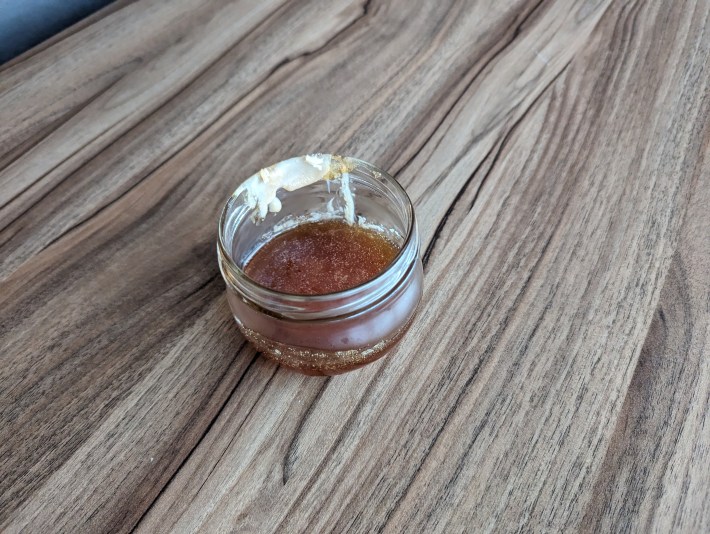
It was a couple tablespoons. It looked like syrup and acted like syrup. Here it finally was, the end product of this grand experiment in urban foraging. I plucked a bit with the very tip of a spoon and lifted it into my mouth.
My knees slowly slumped to the floor. My arms lifted to the heavens. Adagio for Strings swelled around me in our living room. Reader: It sucked.
OK, I contend that when I tried it, you could detect the faint echo of actual maple syrup flavor. But it had a sour tang that rendered it unworthy of even stale, three-day old pancakes from Perkins. My partner tried it and locked eye contact with me for the several seconds it took for her face to crunch in revulsion.
But you don’t need to horrify your loved ones with your Frankensteinian monster-sugar. Armed with knowledge directly from the Minnesota Department of Natural Resources, I have every confidence I’ll be able to pull it off this year, and so should you. Let’s see how it goes, and meet back here in a couple months.
